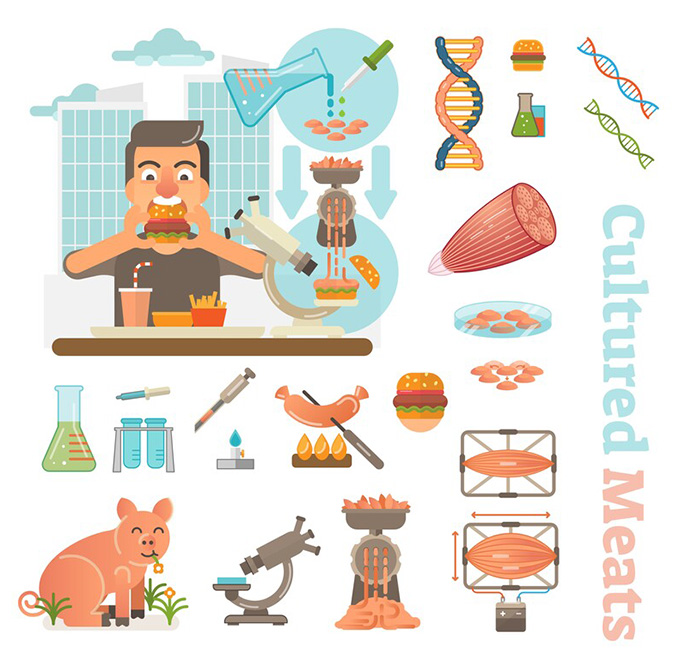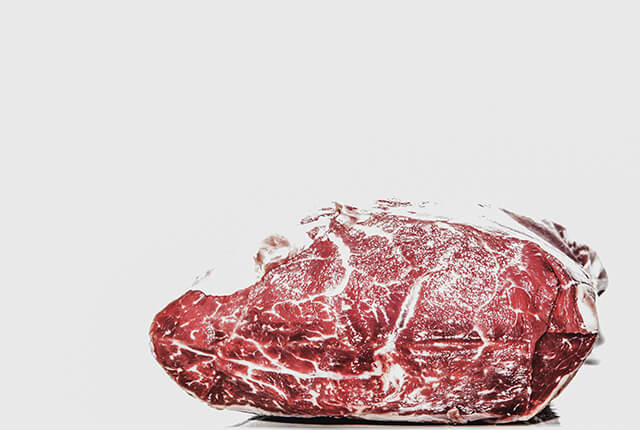Cultured meat is a type of meat grown in a laboratory from animal cells. It is also sometimes referred to as “lab-grown meat”. This type of meat has the potential to be a more sustainable and ethical alternative to conventional meat.
It requires less land and water consumption and produces fewer greenhouse gas emissions. Despite these potential advantages, this lab-grown meat is not yet commercially available. There are still many challenges to overcome before it can be widely adopted.
These include perfecting the taste and texture of this kind of meat, reducing production costs, and addressing public concerns about its safety and acceptability.
Healthy, sustainable food production methods give us food that is nutritionally better and with fewer pesticides, antibiotics, and hormones.
Marion Nestle
How its made?
Cultured meat is made by growing animal cells in a laboratory. This is made during a process called “cell culture.” In this process, cells are taken from a live animal and grown in a nutrient-rich medium. The cells are placed on a scaffold made of collagen or another material, which helps them to grow into muscle tissue.
The muscle tissue is then harvested and processed into cultured meat products. This meat is not yet commercially available, but several companies are working on developing it. One of the biggest challenges is reducing production costs. Cultured meat is currently much more expensive to produce than conventional meat.
Also Read: We Cannot Talk About Food Without Talking About Racism. Here’s Why.

Benefits of consuming cultured meat
Reduced impact on the environment. It requires less land and water usage than conventional meat production, as it produces fewer greenhouse emissions. It is cutting all the pollution caused by farming, as all the dangerous toxic waste from animals ends up in our land and groundwaters.
Reduced animal cruelty. Doesn’t require the killing of animals and poor living conditions in which animals live for their whole life on farms
Healthier products. It is lower in saturated fat and cholesterol than conventional meat.
Safer products. Cultured meat is not subject to the same risks of foodborne illnesses as animal meat.
Increased food security. It is produced in a controlled environment, which reduces the risk of crop failures or livestock diseases.
Cultured meat versus real meat
Studies show that there are several differences between cultured meat and real meat. Cultured meat is grown in a laboratory from animal cells, while real meat comes from slaughtered animals. – As mentioned, this meat has the potential to be more sustainable and ethical than animal meat, as it does not require the killing of animals. It also requires less natural resources than conventional meat production and produces less methane and CO2 caused by farming.

Future of cultured meat
The future of cultured meat is uncertain, but it has the potential to be a more sustainable and ethical alternative to conventional meat. If cultured meat is commercially produced at a competitive price, it could reduce the impact on the environment and animal welfare.
In other words, cultured meat is an absolute winner in comparison to animal meat. According to a study, Younger consumers were most open to the idea of lab meat, with 49% of Gen Z and 45% of millennials highly likely to try it. Only 33% of baby boomers were highly likely to eat lab-grown meat. This group also had the highest percentage of unwillingness to try it at 28%.
Studies about cultured meat
Several studies have been conducted on lab-grown meat. The majority was focused on its potential impact on the environment and animal welfare. Cultured meat is not yet commercially available due to high production costs. The study found that the cost of producing 1kg of lab-grown chicken meat was $9,000, compared to $2.50 for conventional chicken meat. But with technology development and more public interest and support for this idea, the production cost can be lower in the upcoming years.
Who came up with this idea anyway?
The first cultured meat was created by Dr. Mark Post, a professor of physiology at Maastricht University in the Netherlands. In 2013, Dr. Post and his team created the world’s first cultured burger, made from beef cells. Since then, several other companies and research teams have developed their lab-grown meat products, including chicken, duck, pork, and fish.
Will cultured meat replace real meat in the future?
 Cultured meat has the potential to be a more sustainable and ethical alternative to conventional meat. It may be adopted on a larger scale in the future. If there is a high demand for this meat and people implement the vegan lifestyle is most likely that this is the meat of the future.
Cultured meat has the potential to be a more sustainable and ethical alternative to conventional meat. It may be adopted on a larger scale in the future. If there is a high demand for this meat and people implement the vegan lifestyle is most likely that this is the meat of the future.
We should grow awareness between friends, family, and co-workers to help spread the idea of a better and greener future for our kids.
Conclusion:
It is needless to say that lab-grown meat is a winner in this race, as it has environmental and health benefits. Also, it doesn’t require barbaric measures and poor treatment of animals that they receive every day worldwide. About 200 million land animals are slaughtered around the world every single day. There is no need for anyone to suffer in the 21st century, especially living beings, so let us turn to more sustainable and “cleaner” options and make this world a better place.


